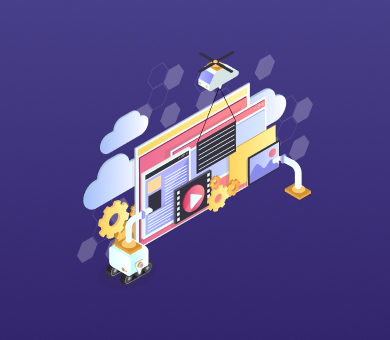These days, ads are everywhere—on every device and platform you use. But what’s behind those ads isn’t always obvious and can be a bit confusing. That’s where AdTech, short for digital advertising technology, comes in.
With digital advertising set to top $600 billion globally, it’s more important than ever for businesses to understand how ad systems work if they want to get the most out of their marketing.
In this article, we’ll break down what AdTech is, its key components, and the latest trends shaping the industry.
What is AdTech?
AdTech is all about the software and tools that help you handle, show, and track digital ads.
People sometimes mix up AdTech with MarTech (marketing technology), but they actually do different things.
MarTech includes all kinds of tools for marketing, like those for email campaigns, social media, and content creation.
Advertising technology, however, is specifically focused on promoting, using paid channels to sell products or services.
Key Players in Advertising Technologies
The commercials world has a bunch of players, each with their own important role in digital advertising. Here’s a quick look at who’s who:
Publishers
Publishers are the owners of digital spaces—websites, apps, or any platform where ads can be displayed. They sell ad space to advertisers and rely on ads software to maximize their revenue by optimizing how and when ads are shown.
Advertisers
Advertisers are the brands or businesses that want to sell their products or services. They buy ad space from publishers and use AdTech to reach their target audience, making sure they get the best return on their investment.
Agency Trade Desks/Advertising Agencies
Advertising agencies, also known as creative agencies, are specialized teams that manage programmatic ad buying on behalf of clients. They optimize ad campaigns and ensure they meet the client’s goals.
Ad Networks
Ad networks connect publishers with advertisers. They gather ad space from different publishers and sell it to advertisers, making sure the right ads get matched with the right spots.
AdTech Solution Providers
The major task of solution providers is AdTech software development. They create and offer the tools and platforms that power the entire AdTech industry, such as ad servers, DSPs, and SSPs. Providers must balance offering a variety of tools under one brand while clearly defining their market role.
End-Users
While not directly involved in the buying or selling of ads, consumers are an essential part of the AdTech ecosystem. Their behaviors, preferences, and privacy concerns impact on how commercials grow, especially in areas like targeted advertising and data usage.
Core Components of the AdTech Ecosystem
The AdTech world is made up of a few key components that are crucial for delivering, managing, and improving digital ads. Let’s break down these essential elements:

Ad Servers
Ad servers are key tools for publishers, advertisers, ad networks, and agencies to manage and show ads. There are two kinds: first-party servers for publishers and third-party servers for everyone else. They make sure the right ads reach the right people at the right time.
Supply-Side Platforms (SSPs)
SSPs are used by publishers to connect to the programmatic advertising ecosystem. They enable publishers to sell their unsold ad inventory automatically, often through an integrated ad exchange.
SSPs offer features like price floors, ad zone control, and bidder selection, giving publishers significant control over their ad space.
Demand-Side Platforms (DSPs)
DSPs are like SSPs for advertisers. They automate ad buying, letting advertisers bid on ad space in real time. DSPs offer features like frequency capping, budget management, and audience targeting.
Data Management Platforms (DMPs)
DMPs traditionally collected and managed third-party data to create comprehensive user profiles for ad targeting.
However, with the impending demise of third-party cookies, many DMPs are pivoting toward first-party data strategies or rebranding as Customer Data Platforms (CDPs).
Customer Data Platforms (CDPs)
CDPs focus on collecting and managing first-party data directly from users interacting with a business’s digital properties.
As a response to privacy concerns and the shift away from third-party cookies, CDPs are becoming an essential part of the ads stack, allowing for accurate audience targeting without relying on external data sources.
Ad Inventory Scanning and Ad Quality Tools
These tools, also known as brand safety tools, help ensure that ads meet quality standards and do not contain malware or inappropriate content.
They protect the reputation of both publishers and advertisers by scanning ad content before it is displayed, ensuring a safe and positive user experience.
Current Trends
AdTech is changing fast, and staying updated on the latest trends can help you make the most of your digital advertising efforts.

A big change is the growing emphasis on privacy. With new regulations like GDPR and CCPA in place, companies are focusing on using first-party data and adopting privacy-friendly practices. This way, they can stay compliant while still delivering personalized ads.
Artificial intelligence (AI) and machine learning are also making a huge impact. These technologies help advertisers get a better handle on their audience and fine-tune ad performance by analyzing data in real time.
Programmatic advertising is a top trend as well. This automated approach streamlines ad buying and selling, making it easier to target the right people at the right time without all the manual effort.
Native ads, which little by little blend in with the content around them, are becoming incredibly popular. They’re less noisy and more encouraging, making them a favorite for advertisers who want to connect with users.
Conclusion
AdTech is an important part of digital advertising competitions. To get the most out of your ads, it’s key to understand how it works, who’s involved, and what’s trending.
As the industry keeps evolving, staying on top of things and being flexible is crucial. Whether you’re a publisher, advertiser, or agency, having a solid and adaptable AdTech setup is essential for hitting your advertising goals.
Looking to enhance your AdTech solutions? Contact SCAND now for expert custom programming services and get started on building your ideal AdTech stack.

